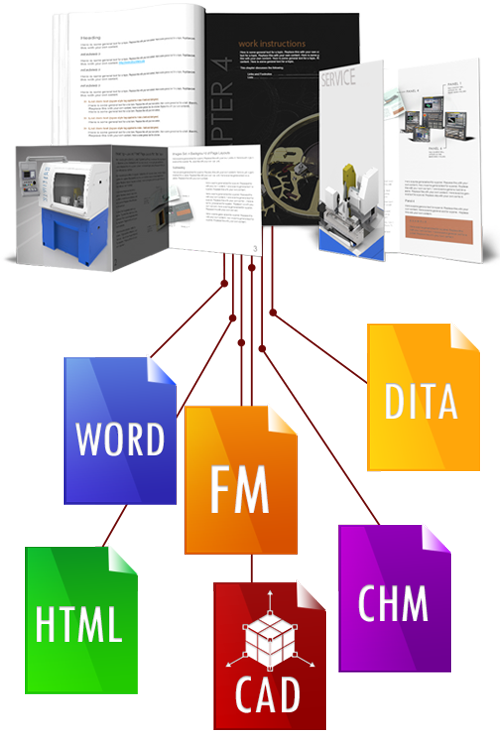Technical Communication
Writing & technical communication
Technical communication accompanies the product throughout its life. It is made up of different media in different formats: training courses, technical data sheets, manuals, instructions or marketing support.
Highlighting product capabilities
The objective of technical communication is to highlight the relevance of a product to the needs of customers. Différents supports sont utilisés, en fonction du niveau d’expertise de l’interlocuteur et de son appartenance ou non à l’entreprise (prospects, clients, collaborateurs, formateurs, techniciens).
The technical writer tailors his message to each audience. Il se sert de toutes les ressources de la communication (écrits, illustrations, films, animations). Rouage essentiel de la communication technique, le rédacteur technique prend constamment en compte la dimension marketing en vue de favoriser les ventes, car tout support de communication doit être un outil de marketing.
The warnings that keep you safe
Les limites et la bonne utilisation d’un produit doivent être mis en évidence dans toute communication technique. Pour protéger l’utilisateur, protéger et le produit et surtout pour que jamais un utilisateur ne puisse se retourner contre un concepteur par manque d’informations.
Communicating simply
This principle is not specific to technical communication. It is a general engineering principle, which assumes that any man-made object is more reliable and easier to maintain and evolve if its complexity is deliberately reduced.
This is what has often led to the design of the most ergonomic products: fewer parts, cheaper, more reliable.
The tools and the writer
What has worked spectacularly for well-known brands can be applied with equal success to technical communication. Regardless of the format used, the technical writer can build an elegantly architected document, as well as a gas plant.
With DITA XML, the rules are relatively strict to keep the documentation simple and modular. FrameMaker imposes few safeguards and Word none. The skills of the technical writer are therefore, regardless of the tool used, at the forefront to ensure that the content remains maintainable and explicit.
The same goes for interfaces, illustrations and animations.
Better understanding and simple explanation
Similarly, when formulating sentences, the technical writer should always keep in mind the principle of simplicity. It is easy to construct complicated sentences that indicate a lack of understanding of the topic rather than elaborate writing.
Constructing a simple sentence requires an effort to understand its subject. Writing the content and making it understandable to the recipient becomes easy. This is a fundamental aspect of the technical writer’s job. The technical writer thus brings real added value to the product he documents, to technical communication.


